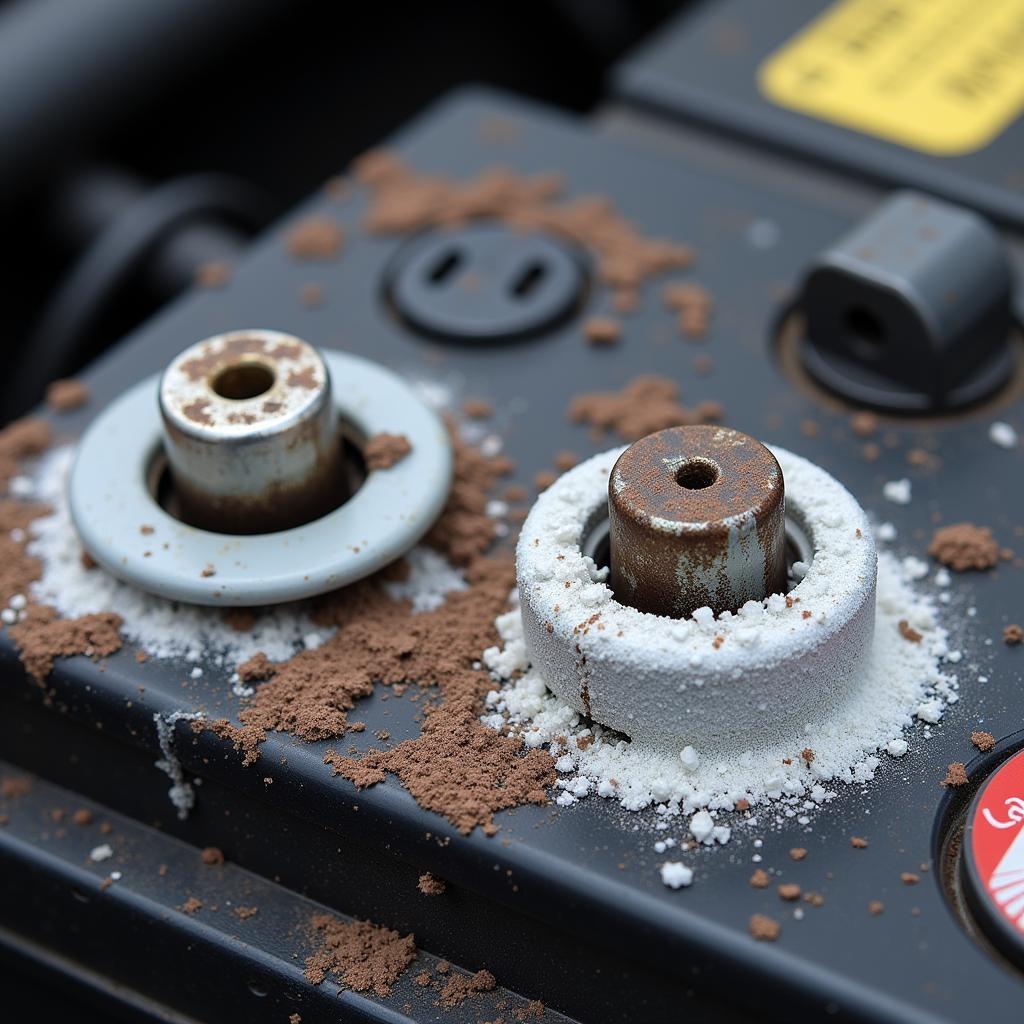A dead battery is a frustratingly common experience for car owners. Whether you’re rushing to work or heading out on a road trip, a flat battery can bring everything to a screeching halt. This article will delve into the common reasons why your car battery goes flat, offer practical solutions for getting back on the road, and provide preventive measures to avoid future battery issues. We’ll also discuss advanced diagnostic techniques and remote software solutions for addressing complex battery problems.
Common Causes of a Flat Car Battery
Several factors can contribute to a dead battery. Understanding these causes can help you diagnose the problem and implement the correct solution.
- Leaving lights on: This is perhaps the most common culprit. Even interior lights can drain a battery overnight.
- Extreme temperatures: Both extreme heat and cold can significantly impact battery performance and lifespan.
- Old age: Like any component, batteries have a limited lifespan. Typically, a car battery lasts between three and five years.
- Short trips: Short trips don’t allow the alternator enough time to fully recharge the battery.
- Parasitic drain: This occurs when a component continues to draw power even when the car is off, slowly draining the battery over time.
- Faulty alternator: The alternator is responsible for recharging the battery while the engine is running. A malfunctioning alternator won’t charge the battery effectively.
- Corroded terminals: Corrosion on the battery terminals can impede the flow of electricity.
 Car Battery Terminal Corrosion
Car Battery Terminal Corrosion
How to Troubleshoot a Flat Battery
If your battery goes flat, there are several things you can try before calling for roadside assistance.
- Jump-starting: Using jumper cables and another vehicle’s battery is a common and effective way to start your car.
- Using a portable jump starter: These compact devices can provide enough power to start your car without another vehicle.
- Checking the alternator: A multimeter can be used to check the alternator’s output voltage.
Preventing a Flat Battery: Proactive Maintenance
Prevention is always better than cure. These preventative measures can help extend the life of your battery and avoid unexpected flat battery situations.
- Regularly cleaning battery terminals: Use a wire brush and a baking soda solution to clean corrosion from the terminals.
- Testing your battery: Have your battery tested regularly, especially during extreme temperatures.
- Limiting short trips: If possible, combine short trips into longer ones to allow the alternator to fully charge the battery.
- Turning off all lights and accessories: Double-check that all lights and accessories are off before leaving your car.
- Investing in a battery maintainer: These devices can help keep your battery charged, especially during periods of inactivity.
Advanced Diagnostics and Remote Software Solutions
For persistent battery issues, advanced diagnostics may be necessary. Modern vehicles are equipped with sophisticated electronic systems that can be diagnosed remotely. Our specialized remote software solutions can identify complex battery problems, including parasitic drains and intermittent alternator issues, without requiring a physical visit to a mechanic.
“Remote diagnostics have revolutionized the way we troubleshoot car problems,” says John Smith, Senior Automotive Electrical Engineer at AutoTech Solutions. “It allows us to quickly and accurately pinpoint the root cause of a flat battery, saving time and money for our customers.”
Why Your Battery Goes Flat in Winter
Cold weather puts additional stress on your car battery. The chemical reactions within the battery slow down, reducing its capacity. Additionally, engine oil thickens in cold weather, making it harder for the engine to turn over, requiring more power from the battery.
“Cold cranking amps (CCA) are a crucial factor to consider when choosing a battery for cold climates,” explains Jane Doe, Lead Battery Technician at Battery Experts Inc. “A higher CCA rating indicates the battery’s ability to start an engine in cold temperatures.”
Conclusion
Dealing with a flat battery can be frustrating, but understanding the causes, solutions, and preventative measures can empower you to take control of the situation. By following the advice in this article, you can keep your car battery in optimal condition and avoid being stranded with a dead battery. Remember, regular maintenance and prompt attention to any warning signs are key to a long-lasting and reliable battery.
FAQ
- How long does a car battery last? Typically, three to five years.
- Can I jump-start my car myself? Yes, with jumper cables and another vehicle or a portable jump starter.
- What are signs of a failing alternator? Dim headlights, flickering dashboard lights, and unusual noises.
- How often should I clean my battery terminals? Every few months, or as needed.
- What is a parasitic drain? When a component draws power even when the car is off.
- How do I test my car battery? With a multimeter or by having it tested at an auto parts store.
- How can remote diagnostics help with battery problems? They can quickly pinpoint complex issues, saving time and money.


